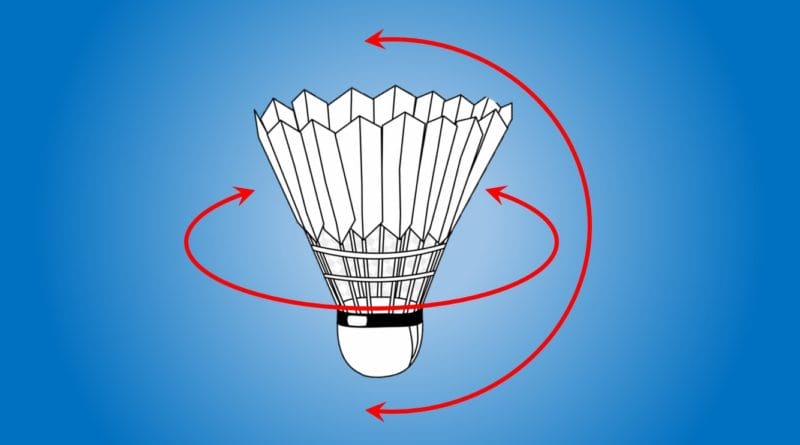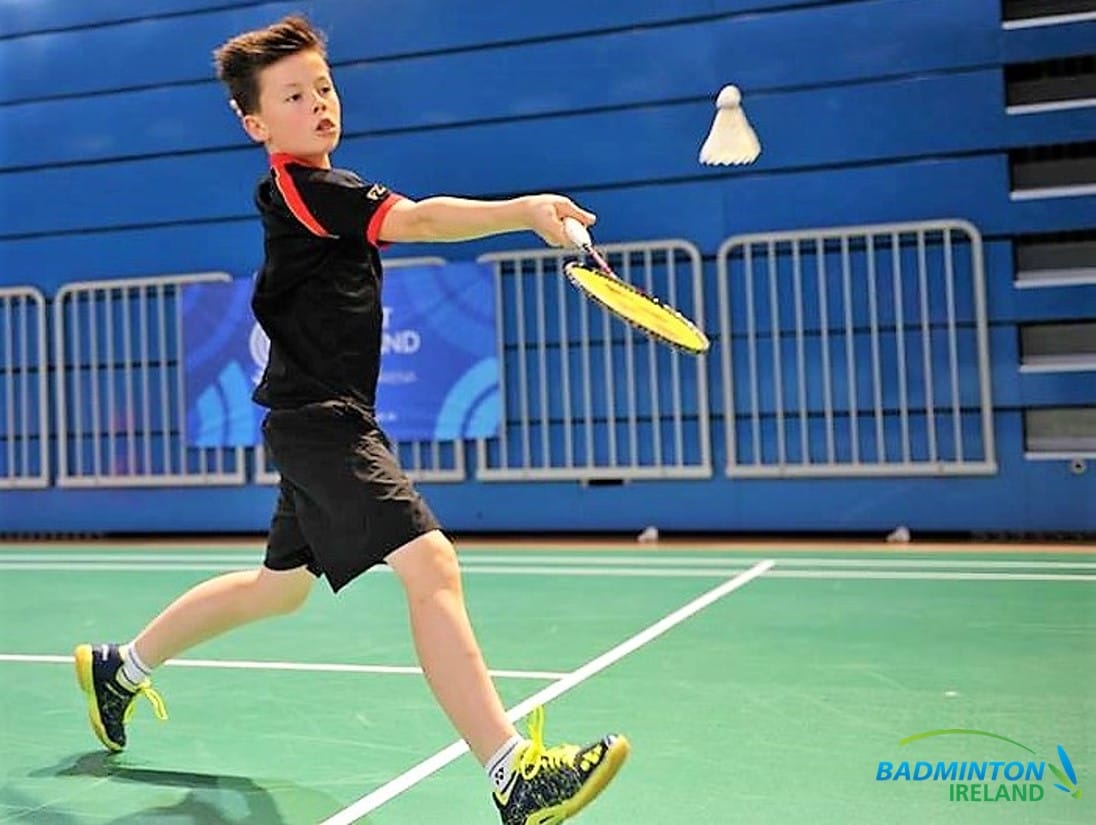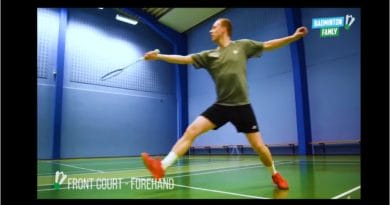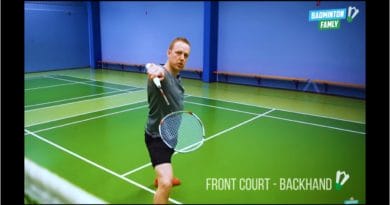6 Ways to start and discovery all about spinning net shots
How much do you know about spinning net shots?
Do you want to know all about what they are, the types and some tips to help you start?
This is part 1 of 2 posts aimed at helping you start, develop and improve your spinning net shots
Part 2 – The finer points, tactical and practice ideas
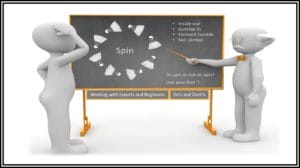
– – – – – – – – – – – – – – – – – –
1. Where to start: without a net (Parts 1 & 2)
2. How to start on the court at the net
3. Starting stances
4. Contact point
5. All the different types
6. Errors & mistakes are the keys to success
– – – – – – – – – – – – – – – –
Where to start before going into court Part 1 and Part 2
First of all, you need to get a feeling and a sense of what a spinning shuttle looks like before you try to play a spinning net on court.
All the different ways it can spin., the different racket movements that cause the spins.
The shuttle will spin almost every time you strike it, but can you make it spin as you want. Did you know that a spinning net shuttle can be difficult for your opponents to control and hit back over the net?
The aim is to spin it in such a way that it’s almost impossible to control the return
The unreturnable spinning net : is that possible?
Without a net: Part 1
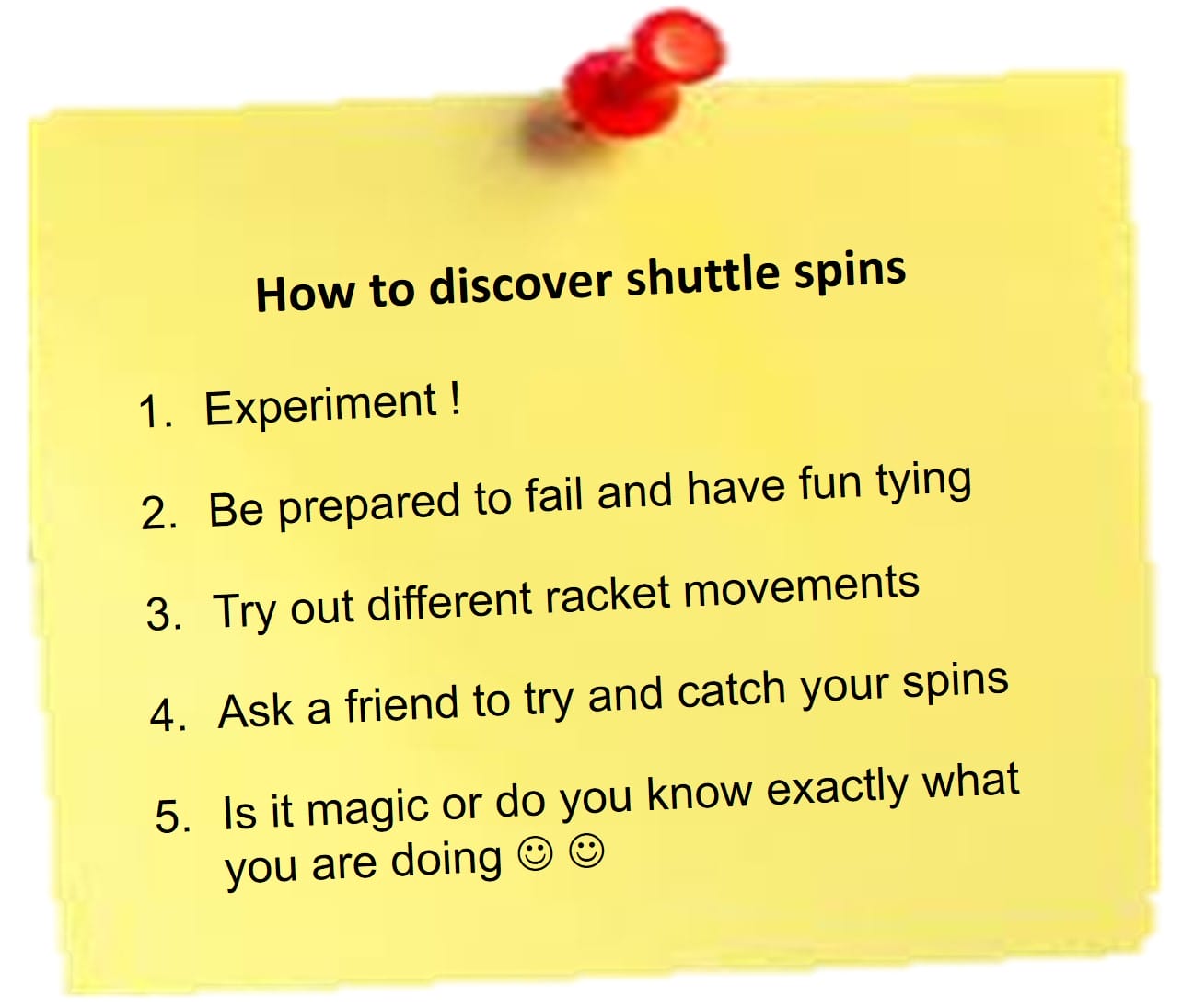 I like to encourage players to try this as soon as they can bounce the shuttle up and down on the racket in a lunge stance
I like to encourage players to try this as soon as they can bounce the shuttle up and down on the racket in a lunge stance
- No matter what your age and experience. It’s a fun and enjoyable task to experiment and discover all spins.
- It’s important to know that the shuttle can spin – may be obvious to you but not to a beginner
- To know that it can spin in many different ways – how many can you count?
- Finding out that some spins are really tough to control – trying to catch a spinning shuttle isn’t always easy!
- How exciting is it to you when you see a shuttle spinning – its a secret skill 🙂
- In the beginning, some spins are unexpected and hard to replicate – there is fun in trying to replicate the same spin
- The size of the racket movements doesn’t matter. In fact, I’d prefer players to experiment with how big they swing, the directions they chose and the speed of the contact with the shuttle. Discover what works and what doesn’t!
- Players must be encouraged to see what spins they can make, even if they can’t replicate them again.
Find the fun and enjoyment in trying to work out how you made the shuttle spin and repeating it
Without a net: Part 2
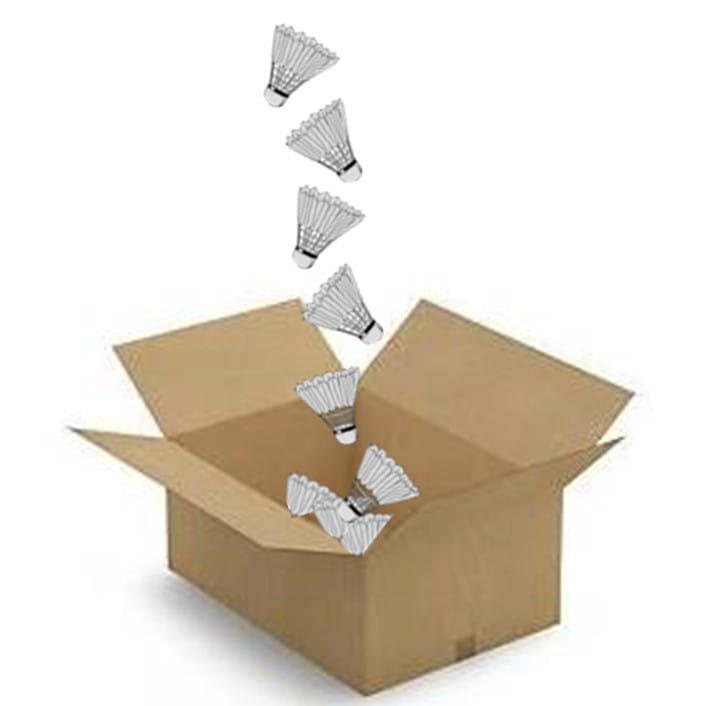 Just before trying at the net, you could try spinning into a box
Just before trying at the net, you could try spinning into a box
I’ve seen this on a few coaching videos and certainly like the idea
The player stands with the racket out so that it’s above a large box. Your feeder stands on the opposite side of the box with you on the other. They throw underarm, you step forward with a little step and try to hit the shuttle so that it spins and then falls into the box below.
Don’t worry about the height that you hit the shuttles from, although around your armpit height would be a good starting point.
It’s a great way of hitting lots of shuttles and trying to work out how to hit the to create spins. Plus if you do this at the end of every session for say 20 shuttles if saves collecting them up. Hopefully, they have all landed in the box
– – – – – – – – – – – – – – – –
2 How to start on the court at the net
Which side of the court will you start first, the Forehand or Backhand?
You will have to decide: Where would you start? What action would you try first?
 I recommend that you start with 2 spins at the beginning
I recommend that you start with 2 spins at the beginning
- Forehand outside – in
- Backhand inside – out
The terms ‘outside-in’ and ‘inside-out’ refers to the movement of the racket head as it makes contact with the shuttle when playing a spinning net shot
Try these out first in Parts 1 and 2 as described above. It’s important to see what happens to the shuttle and if you can make it spin when hitting in this way.
I will write more about the reason to start here and what to include in a post called Spinning Nets shots – The coaches guide.
These are some of the things to include in your practice and why
- Stand in the middle of the court (or the half-court) – so all shuttles will land ‘in’, it’s better for confidence
- Feed shuttles underarm (up) first, then throw (downwards) second – the feed type will help you discover more ways of spinning and make you adjust
- Don’t worry about the height the shuttle goes over the net – making it spin is the first aim, controlling the height is tougher than you think
- Play net games using these 2 spins – it’s fun and you may find that your partner (opponent) can’t return your shots! 😉
– – – – – – – – – – – – – – – –
3 Starting stances
How will you stand at the start of the practice before you move?
Please don’t stand square!
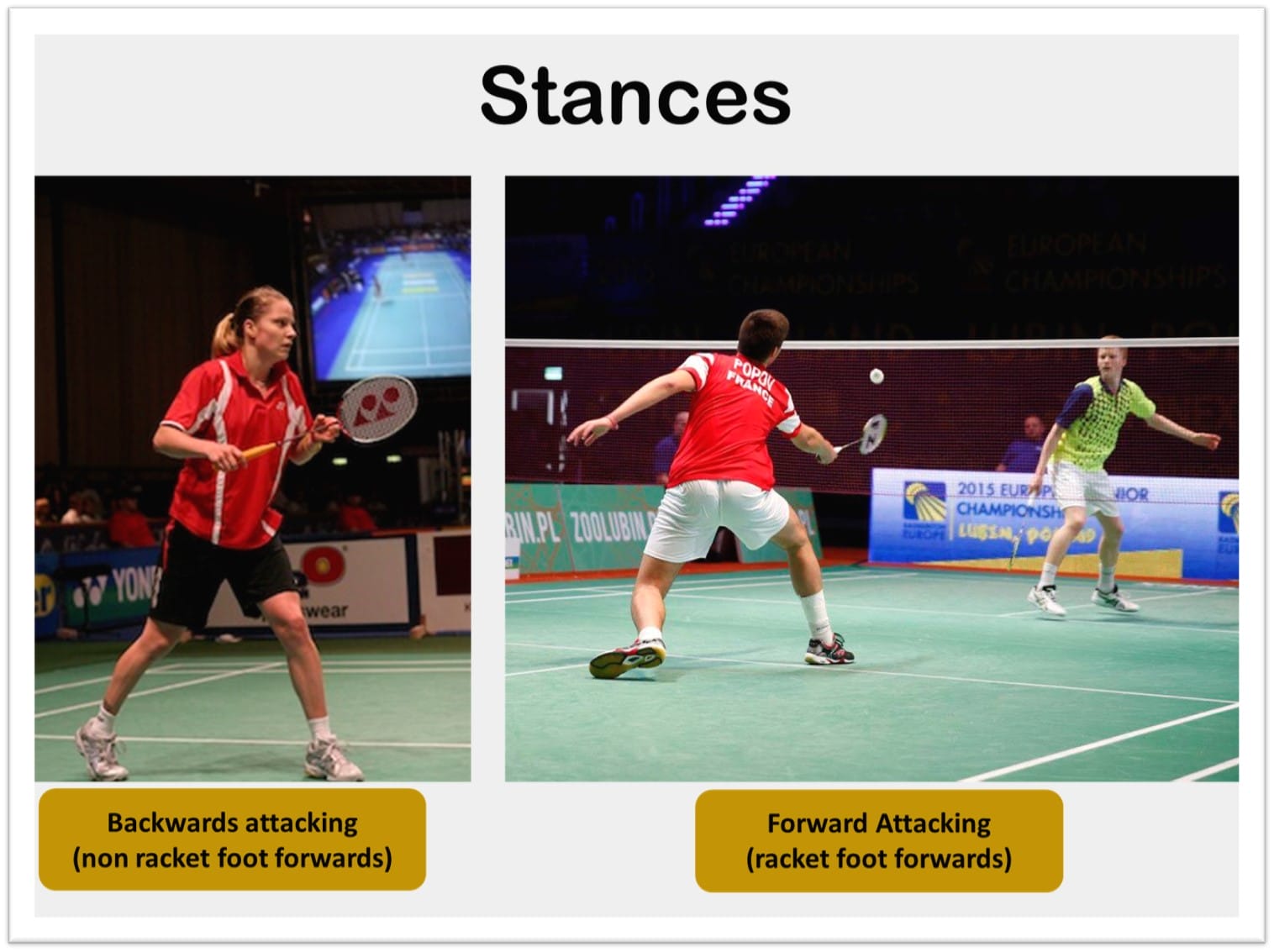 I recommend that you experiment with both racket foot forward (attacking stances) and non-racket foot forward (receiver of serve/backward attacking) stances. These stances will make a difference, can you think why that would be?
I recommend that you experiment with both racket foot forward (attacking stances) and non-racket foot forward (receiver of serve/backward attacking) stances. These stances will make a difference, can you think why that would be?
Plus both are better than just standing square to start. Think about when you stand square on the ‘T’, certainly not in a singles game. In doubles, the spins you’d play are probably different to those in singles and you may decide not to spin at the net for tactical reasons. I will write more about that in later posts.
Using these 2 different starting stances will allow you to both chasse forwards or pivot/turn your body. Both can help with different spins.
It’s very important that you try both stances and all the movements associated with travelling forwards into the net area. Stepping is not the only method you will use in a game so why would you only do that in practice.
I’ll say more about why starting stances are important in the post ‘Spinning Nets shots – The coaches guide’
You will need to experiment to find out which stance and spin combination you like best
– – – – – – – – – – – – – – – –
4 Contact point
I’m not talking about where on the racket face, although some people do advise that different spins are struck from different places on the racket strings
This Point of Contact is about where in relation to the top of the net (the tape) you should first try to strike the shuttle
For most spinning net shots, the shuttle should not be struck at the top of the net but slightly below the tape
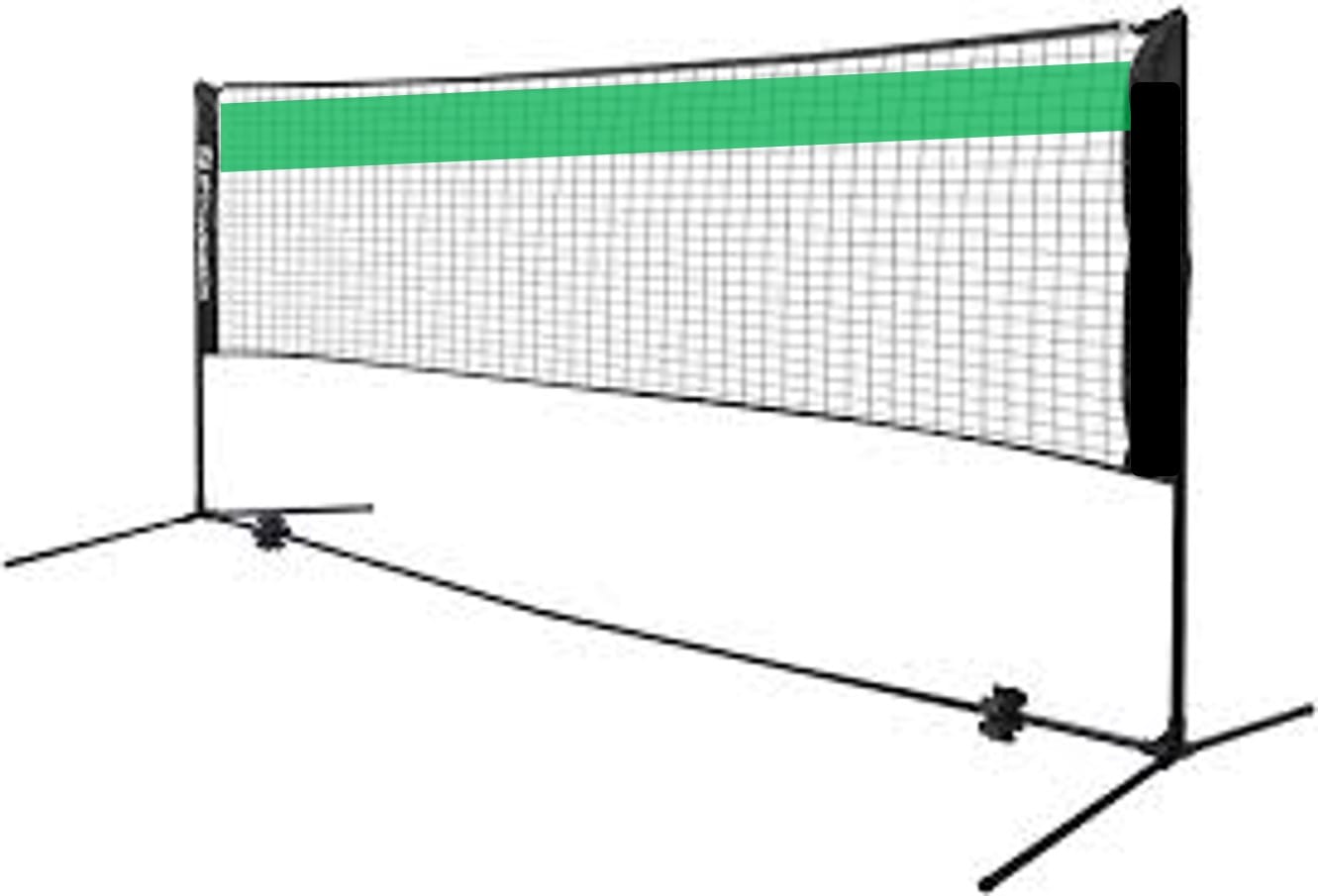 As always there will be different opinions and different viewpoints
As always there will be different opinions and different viewpoints
I would even contradict my own advice at times. As there are certainly reasons (tactical) and spin types that mean striking at net height is the best thing to do.
However, when first starting I recommend striking the shuttle lower than tape height
This is because it’s tough at the start to control the height of the spins and you should find that when you first start to spin that the shuttle can ‘jump’ off the strings more than you are used to
Therefore striking it lower than the tape will mean that it will not sit up too high and be killable (is that even a word?) and the spin will still be strong as it passes over closer to the tape
I would love to hear your thoughts on these aspects for helping beginners to play spinning net shots
What do you think about the height a spin should be struck at, does it matter?
– – – – – – – – – – – – – – – –
5 All the different types
I wish I could tell you exactly how to play spinning net shots, but there are so many different ones that I can only give you general advice
It’s all about the movements of the racket head caused by your fingers, body movements and your foot. More of these actions later.
Here are the general spin categories and the associated racket head movements
Generally, I would like you to experiment using the suggestions below and work out yourself what makes a great spin
I’ll say much more to Coaches about the ideas and suggestions plus cues they could use in Spinning Nets shots – The coaches guide.
Forehand “Outside – In”
Click to listen to the advice from Badminton Family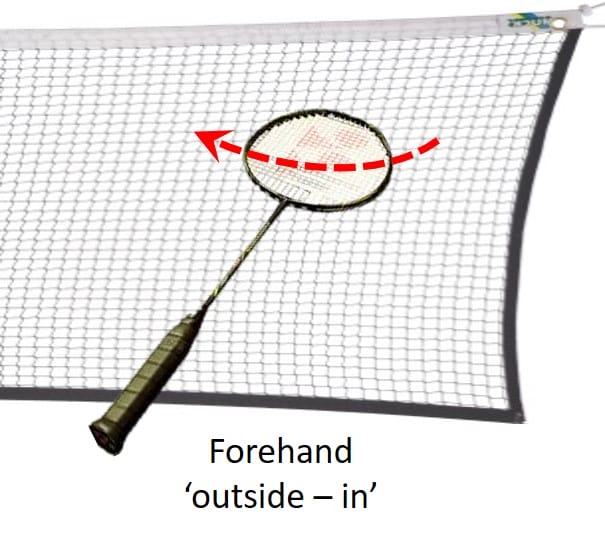 . A favourite one to start learning spins.
. A favourite one to start learning spins.
I recommend that you aim to move your body slightly outside of the shuttle so that if you were to miss it, it would travel toward you racket shoulder.
Try to think of different hand and arm combinations. Some coaches talk about actions like ‘turning a doorknob’ or ‘trying to hit the side then the bottom of the shuttle’. My favourite is to think about the shape of the letter J and draw a J with your strings as you make contact.
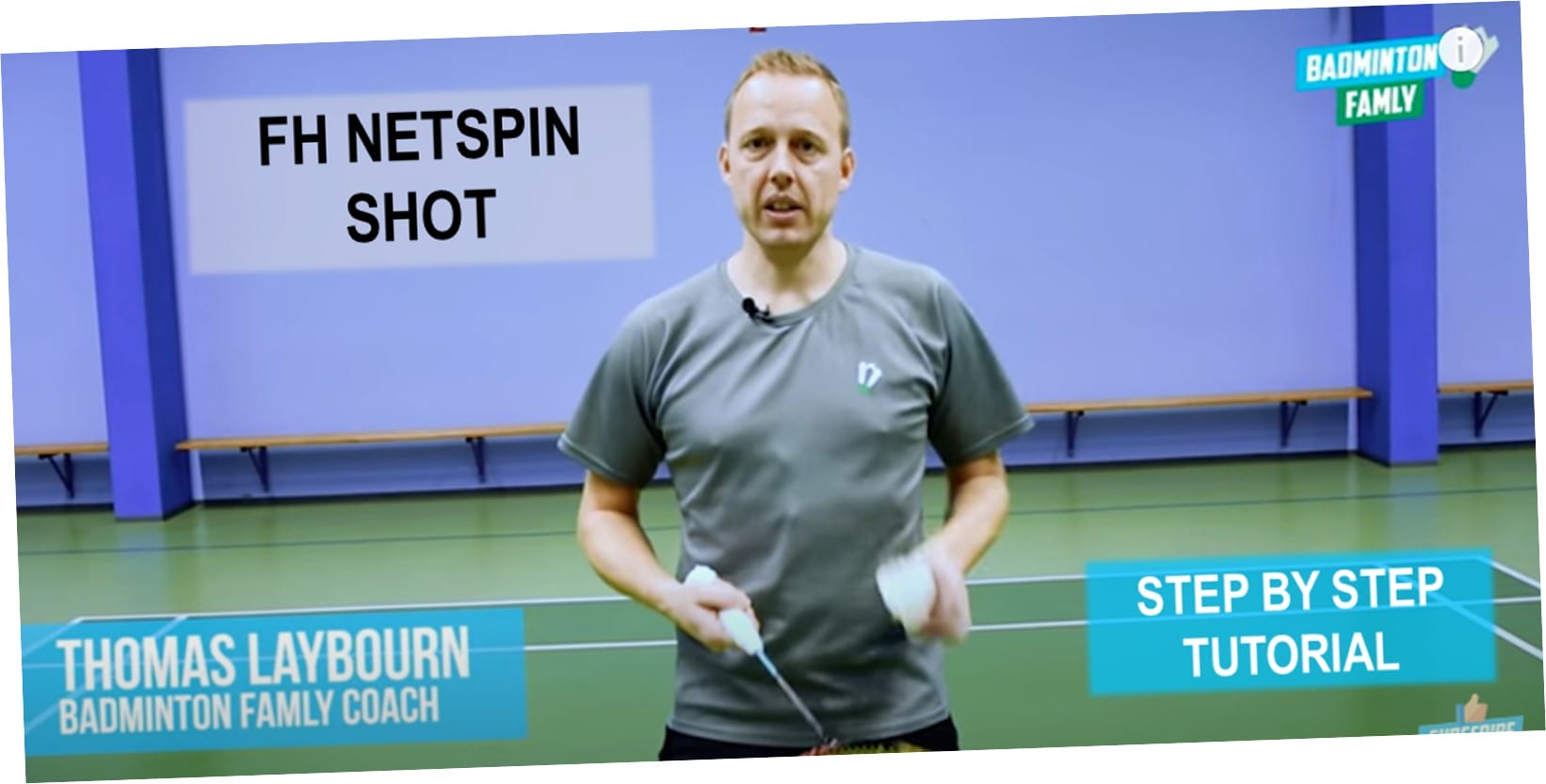 I recommend that you watch this video from Badminton Family. Thomas Layborn will give you more clear and effective advice, plus he really does spin the shuttle! 😉
I recommend that you watch this video from Badminton Family. Thomas Layborn will give you more clear and effective advice, plus he really does spin the shuttle! 😉
Hopefully, you will discover different ways and thoughts that work for you.
I’d love to hear what they are
Forehand “Inside – Out”
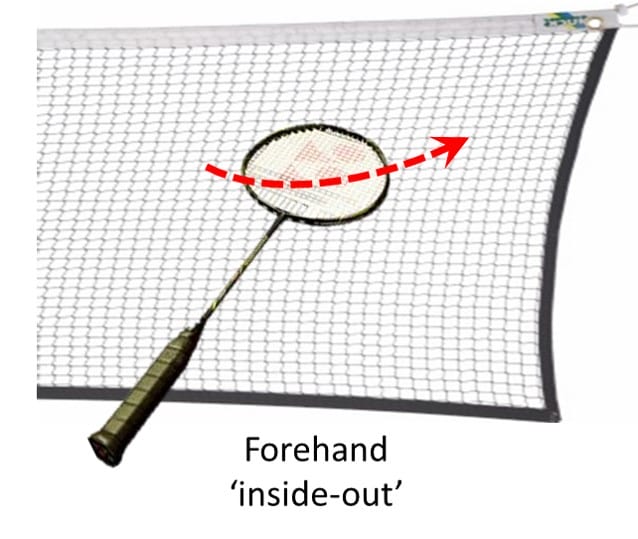 This is a tougher spin to master
This is a tougher spin to master
It’s especially tough if you want to make the shuttle spin as much as the “outside – in”. In fact it’s a different spin completely and tends to make the shuttle flatter and almost roll over the net. The previous “outside-in” can tend to sit up and spin vertically before dropping over the net.
I’d recommend practising this one from a slightly crosscourt feed and striking it from outside of your racket shoulder
Forehand & Backhand “Forward nudge”
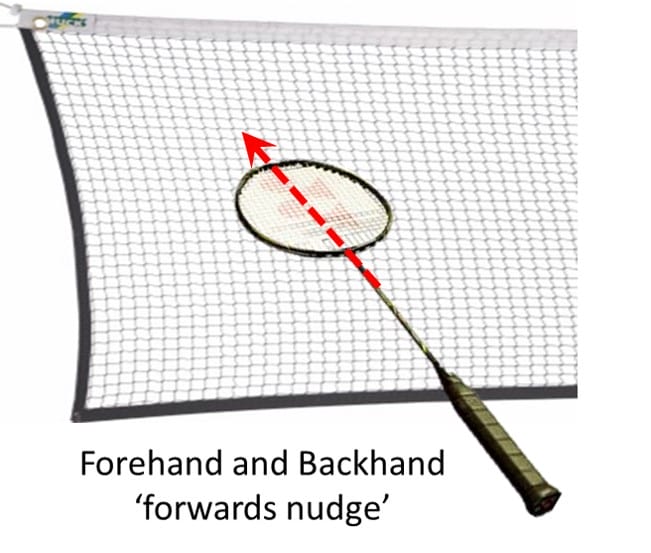 You may be doing this already
You may be doing this already
This is often a spin that emerges when first learning straight net shots. As the name suggests its a forward movement with the racket.
Please consider the timing of your foot as it lands (see later) and the angle of your racket strings caused by how high you lift your hand. This applies to both the F/H and the B/H shots, plus you can combine a slight sideways action just on contact if you want.
I’d recommend that you practice this with both upward and downward feeds. Also ensuring that the shuttle flies at different speeds towards you. To only practise with ‘perfect’ feed will limit your ability in the game.
Backhand “Inside – Out”
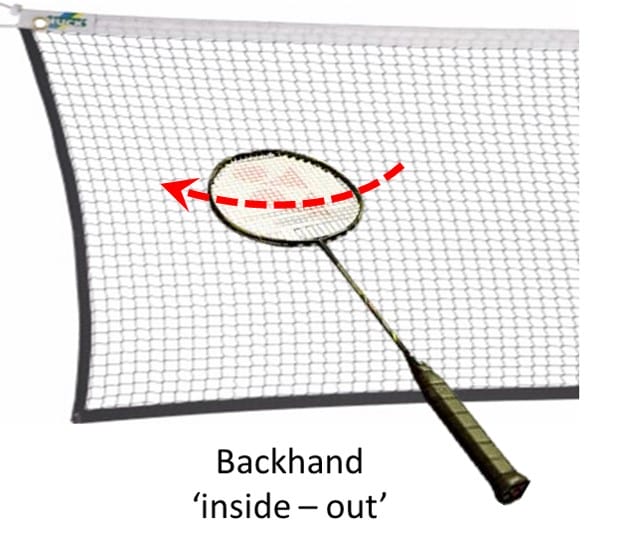 Another early favourite for discovering how the shuttle spins.
Another early favourite for discovering how the shuttle spins.
Probably best developed initially from a crosscourt feed and again use both upward and downward feeds.
The action can be a right to left “U” or “J” shape that causes a slight role under and around the shuttle. It is also played as an angled racket face without any role, cutting across the flight of the crosscourt feed.
Try both actions and let me know the differences in the 2 spins, especially which is easier to get more spin and which is easier to control if you want a tight net.
Backhand “Outside – In”
 This one often looks easy but can be tougher than you think if you want the shuttle to really spin.
This one often looks easy but can be tougher than you think if you want the shuttle to really spin.
It is also tougher to perform as it’s played from wider on your backhand side. You will have to work hard with your movement or use it when you are travelling straight forwards after playing a stroke from your Round The Head area of the court.
It will certainly be easier to master if it’s played from directly in front of you. Try both and see which you prefer.
You will have to prepare early (even earlier than your normal E.P.!) and maybe move your body throughout the action.
Close your eyes now and imaging this stroke. Does your head start to move? 🙂
The Net Climber
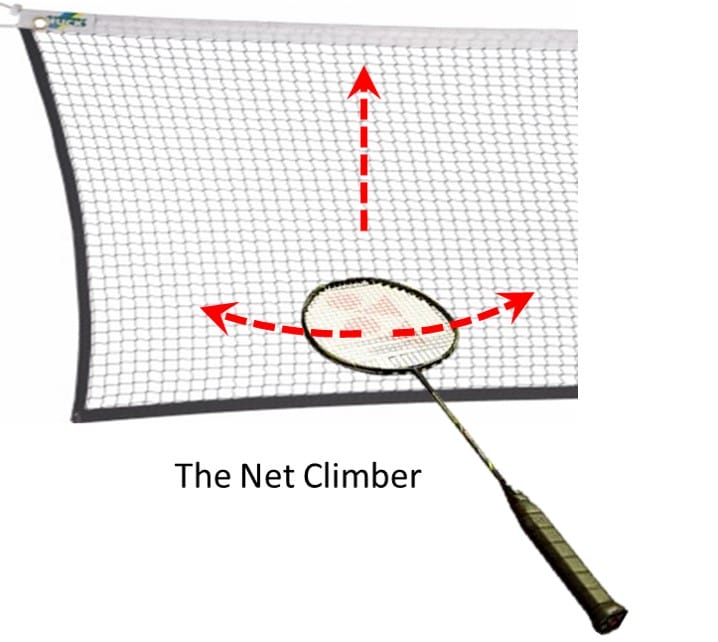 This spin is played when the shuttle is struck from much lower down the net, even around the bottom of the net.
This spin is played when the shuttle is struck from much lower down the net, even around the bottom of the net.
It may be that you are not fast enough to get to the net or more likely your opponent has played a tight net or spin themselves and you need to let the shuttle drop before attempting a return.
Did you know that you can still spin from the bottom of the net?
There are a few ways to perform this stroke. Some players like to cut sideways underneath the shuttle whilst also hitting it upwards. I’ve also spoken to other players who use a backwards-pulling action.
Whichever action you try, I hope you can get the shuttle to spin as soon as it leaves your racket so that it just reaches the tape and falls over.
It can be a fun shot but also an important shot to practice for both singles and doubles players. Try it out when you play net games in practice and remember it’s not lucky if it spins and goes over. The more your practice the ‘luckier you will become’ 🙂
Be calm when trying this as your aim is to get the spinning shuttle’ climbing’ up the net, hopefully grabbing onto the tape and rolling over
Foot Actions
This is one of the least spoken about elements but very important.
The timing of when you strike the shuttle compared to your foot landing can help your spinning net shots as well as your normal net shots.
I recommend that you practice landing in your lunge and striking in the shuttle at the same time.
Slightly earlier or later doesn’t matter but think of ‘Hit-land’ as being your aim.
It’s also good to practice striking all shots about the net with a ‘foot out!’ action. The tougher your match the more you will be moving quickly and often striking shuttle at a comfortable but extreme range from your body.
Have you read number 8 of the Playing Basics: The Lunging Timing Principles
Go back to no.3 and read about the different stances you could use before moving forwards
– – – – – – – – – – – – – – – –
6 Errors & mistakes are the keys to success
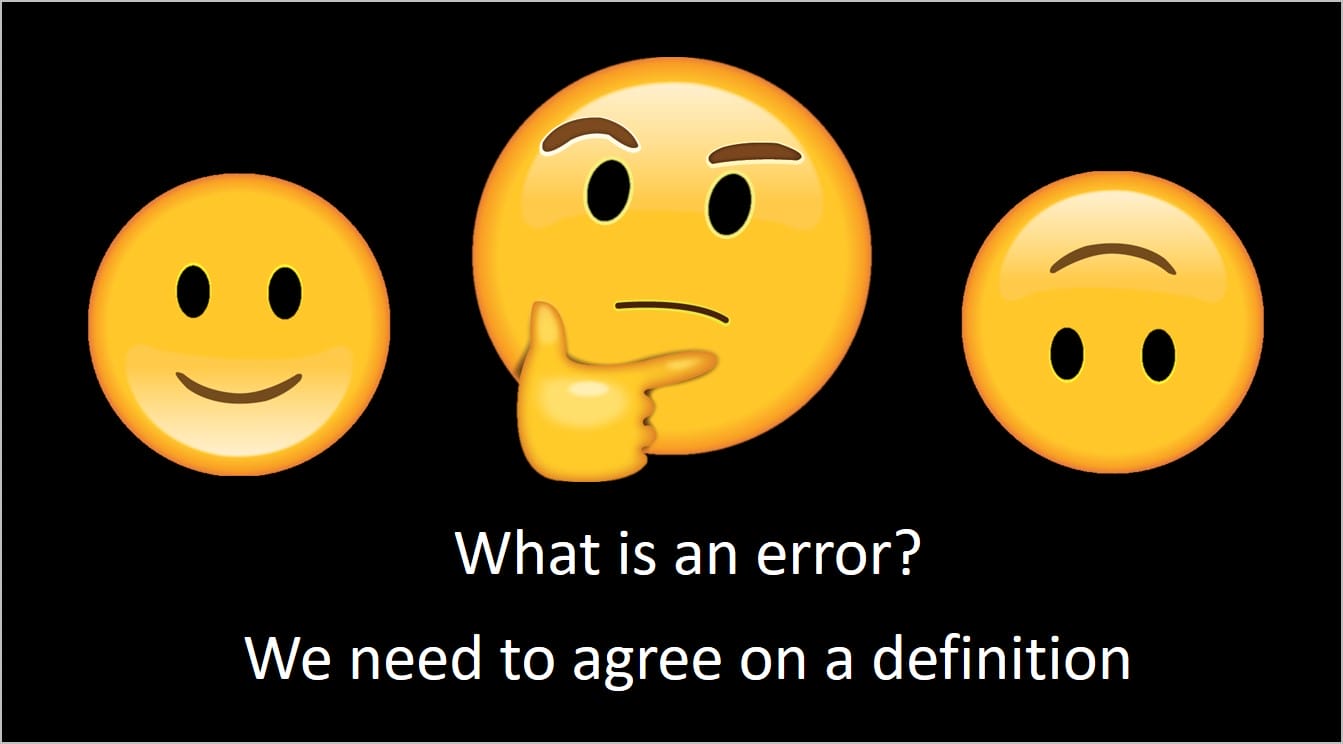
Be prepared to make mistakes when you work on your Spinning net shots, lots of mistakes
The term “error is the price of skill” is a good one to describe how to practice net spins
You need to be brave and not judge your early failures or successes, just enjoy what happens even if you don’t know why it happened
Practice to failure
- Keep trying different ways to apply more and more spin to the shuttle
- Try to make the shuttle tighter to the net, even hitting the tape as it spins
- How much spin can you impact onto the shuttle, so much that it’s difficult or impossible for your partner to return?
- Play net games against other players and your coach. Find the best players and challenge them to net games. Lose to improve.
- Have high expectations but be prepared to learn slowly and learn through experimentation and mistakes
- ‘Perfect Net Spins’ can take a long time to appear, or maybe they never do 🙂
Don’t be afraid to make mistakes. Some of your mistakes may be the best spins 🙂
– – – – – – – – – – – – – – – – – – – – – – – – – – – – – – – – – –
Is there anything that you’ve read that has helped or you disagree with then please send me an email.
I’d love to hear your views contact@badmintonandy.com
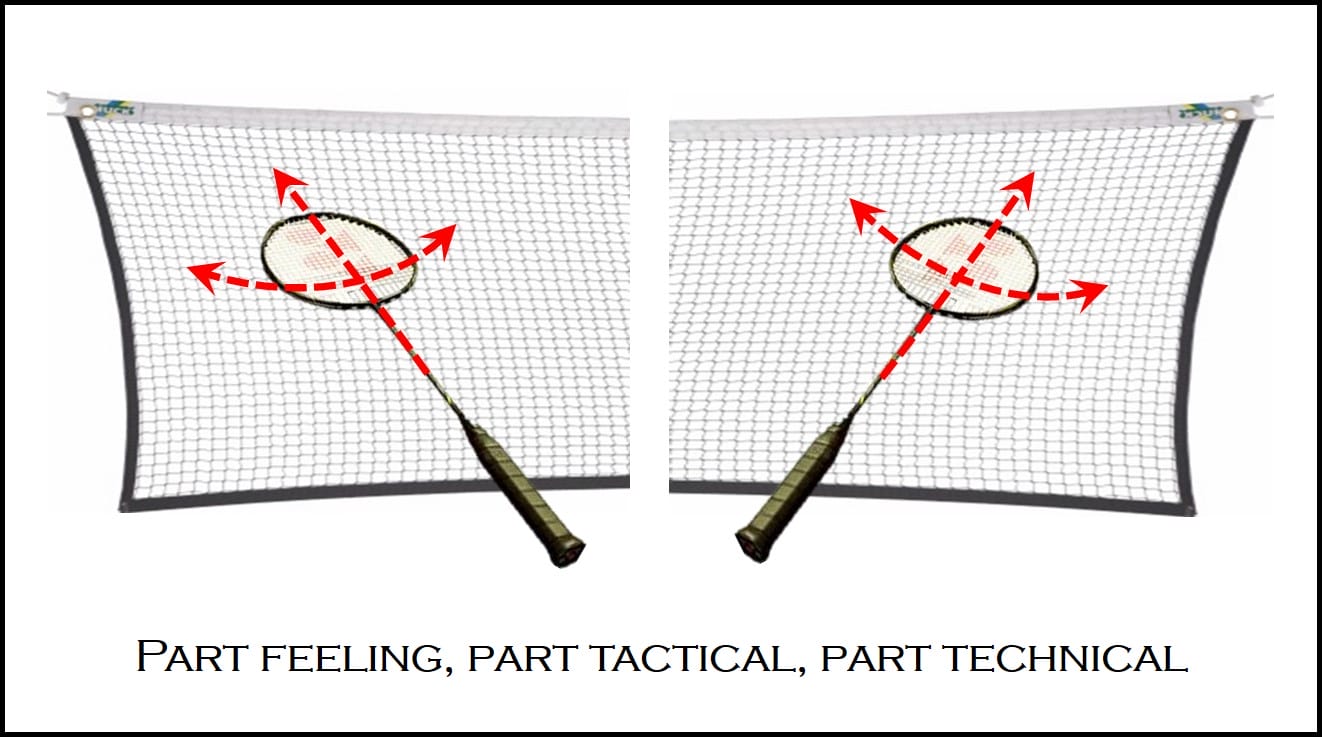
Part 2
discover more about how to improve your spinning net shots
You can read about more technical points but more importantly the tactical and practice ideas
1. More Tips & Suggestions
2. Practices that help
3. Returning spins or nullifying them
4. All the different types
5. To spin or not to spin
6. Conditioned games

